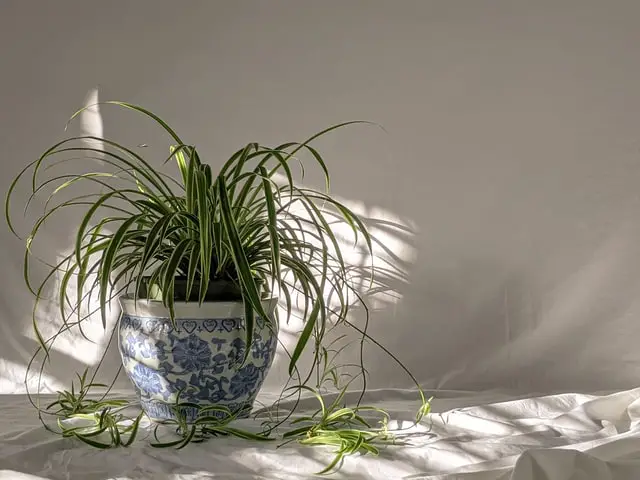You’ve probably been wondering this before yourself. Well, the answer is very interesting and certainly worth finding out about. Let’s take a look at why spider plant leaves bend.
Table of Contents
Why Spider Plant Leaves Bend?
The major cause of spider plant leaf bending is insufficient watering. Leaf bending can be caused by both too much and too little water. Always check the soil’s moisture level before watering a plant, and only water it when the soil feels dry. Keep your spider plant in an area that receives bright indirect light, since insufficient light can also cause the leaves to bend.
Don’t panic if you still can’t find out what’s causing your spider plant’s bent leaves and how to correct it. In this article, we will examine each issue in depth and discuss how it may be fixed. Let’s not waste any time and get started.
Read more: Why is my Spider Plant drooping?
Why does my spider plant leaves bent?
The purpose of this article is to explain why spider plant leaves bend.
Now that you’ve taken a deep breath, let’s go through all the possible reasons for the spider leaves bending.
- Watering
- Sunlight
- Fertilizer
- Pests
- Pot size
Watering
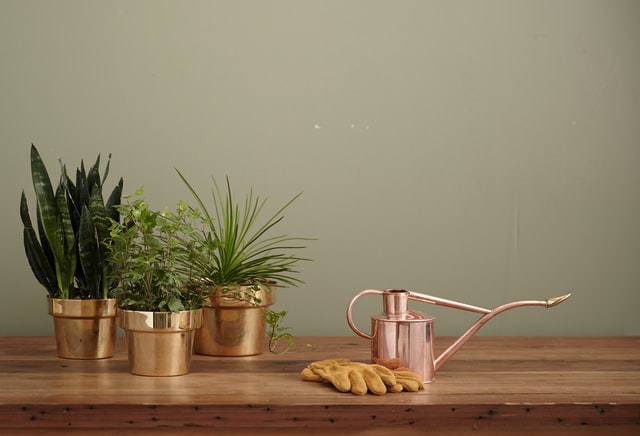
If you’ve ever observed that the leaves of spider plants tend to bend throughout the summer, it’s usually due to a lack of water.
The extreme heat that comes with summer causes water molecules and soil moisture to evaporate, which can be detrimental to both the plant and the soil.
Therefore, if the spider plant is not receiving sufficient water or if there is excessive water loss due to evaporation, the leaves will begin to bend.
But hold on! Many enthusiasts are already aware of this, so they continue to water their spider plants on a regular basis.
If you are one of these people, you are going to be astonished to learn that doing so can also result in the leaves bending, and it may lead to an even more serious issue known as root rot.
Therefore, taking any action on your own until you are informed of all sides of the issue might result in such health problems for the plant.
Read more: The complete guide to repotting a spider plant
Sunlight
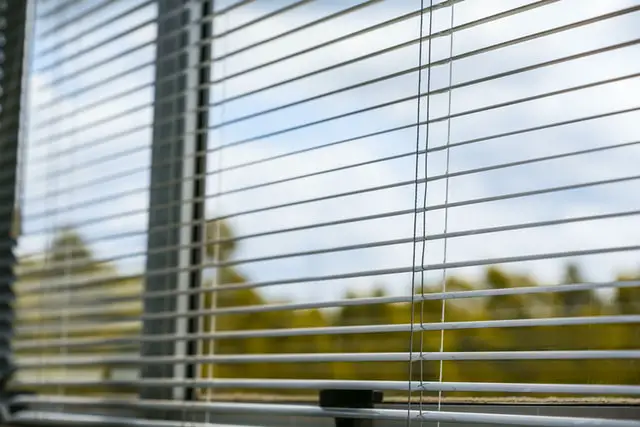
We are already aware that the spider plant cannot withstand prolonged exposure to sunlight without suffering significant harm. However, keeping it in a dimly lit place has the same effect.
Spider plants’ leaves can bend due to both too much and too little light.
Your spider plant may experience leaf burn and bending of its leaves during the summer months since the sunlight is too strong at that time of year.
The amount of sunlight that is available throughout the winter is decreasing, which results in more difficult conditions. Because of this, plants may experience a variety of problems, including the bending of their leaves.
Read more: Why Does Your Spider Plant Have Brown Tips
Fertilizer
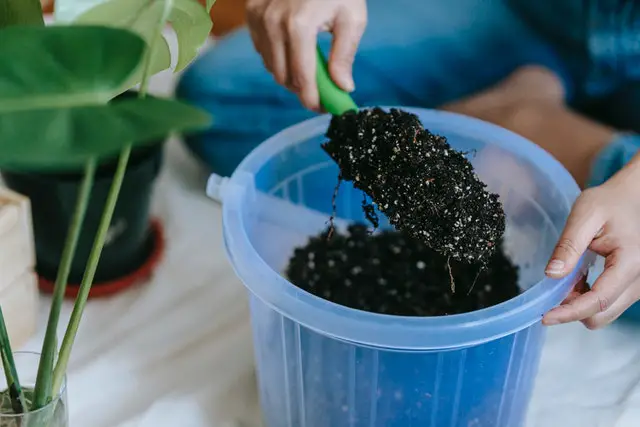
Toxic levels of nutrients can be produced by excessive fertilization. That doesn’t mean you should stop providing them with fertilizer.
The plant cannot meet its nutritional needs without the use of fertilizer, which is an absolute necessity.
So not utilizing fertilizer might be a direct invitation to numerous problems, such as bent leaves, as in your situation.
A lack of proper fertilization might result in nutritional deficiencies. It seems odd that neither environment is favorable for the survival of the spider plant. But ultimately, the key issue is “what should be done?”
In addition to this, even if you are giving it a substantial quantity of fertilizer, it may still be sick. It’s possible that it’s not receiving enough nitrogen because of this.
Insufficient nitrogen can prevent plants from producing new leaves, resulting in leaf bending.
Read more: Why Are My Spider Plant Leaves Folding?
Pests
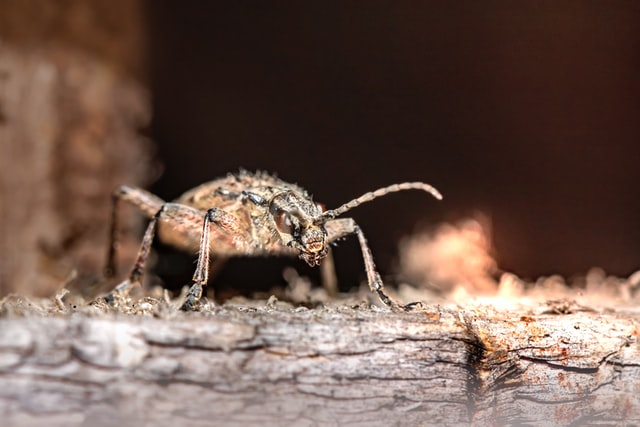
It might be a pest attack if you’ve done everything else correctly but the leaves are bent.
Several pests, such as aphids and spiders Mites, which are responsible for the bending of leaves, feed on the juice of plants.
Once they have made contact with the spider plant, they will continue to siphon the juice from the plant, which will eventually cause the leaves to bend.
These microscopic pests have the benefit of being invisible to human sight, so they might be draining the life out of your spider plant without even realizing it.
Read more: Curly Spider Plant Care – A Complete Guide
The size of the pot or container

When it comes to the growth of a plant, the pot or container’s capacity is one of the most important factors.
If the size of the container is small in comparison to that of the plant, you will see that the overgrown roots are emerging from the drainage hole.
It will destroy the spider plant’s appearance and cause harm to the plant’s leaves.
In a similar way, if the plant is grown in a container that is far larger than it needs to be, it can still result in a variety of issues, including waterlogging and, in the end, root rot.
Water deficit will occur if you use a tiny pot, and waterlogging will occur if you use an extra-large pot. Therefore, both of these occurrences are to blame for the bending of the leaves in spider plants.
Read more: Should I Cut Bent Spider Plant Leaves?
How do you keep spider plant leaves from bending?
We now understand some of the fundamental causes of spider plant leaf bending. Moving forward, the time has come to find solutions to those difficulties.
Let’s have a look at the answer to “Spider plant leaf bends.”
Watering
If you truly care about your Spider plant, you won’t subject it to either an underwater or an overwatering environment. Both of these scenarios have the potential to cause bending in the leaves of spider plants.
Because of the higher temperatures and the fact that it is the plant’s growing season, you should water your spider plant approximately once a week during the summer. This is because water evaporates more quickly during the summer due to the higher temperatures, and the plant requires more water during this time.
Both the rate of growth and the temperature of the atmosphere are lower during the winter months. As a direct consequence of this, the water does not evaporate as rapidly. Therefore, providing your spider plants with water once every two weeks should do the work.
However, it may be more effective if you keep an eye on your plant personally. When the top inch or two of soil feels absolutely dry, dip your finger in it and thoroughly water the plant.
Keep the soil wet but not saturated. Root rot can also be caused when the soil is allowed to remain wet or muddy for an excessive amount of time.
If you are giving the plant the appropriate amount of water but you still observe water accumulating above the soil, you should examine the drainage holes in the container. It is not uncommon for a drainage hole to get clogged, which can lead to waterlogging as well as root rot.
Read more: Why Is My Spider Plant Pale And Limp?
Sunlight
When it comes to the process of photosynthesis, which is how plants create food for themselves, sunlight is one of the most important factors.
However, too much or too little sun can cause spider plant leaves to bend.
It is important to make sure the plant is not exposed to direct sunlight; nonetheless, bright indirect light is essential.
Keeping your spider plants on the window sill during the summer may offer adequate light, but I prefer choosing a better position during the winter because the light at the same spot may not be sufficient.
Artificial light may be adequate as a substitute for natural light for a limited period of time when natural light is unavailable due to inclement weather or other factors.
Make certain that your spider plant always has access to well-lit areas that are not directly overhead in order to maintain its robustness and good looks.
Fertilizer
The spider plant passes through a phase of slow development throughout the winter, and as a result, it does not require as many nutrients during this time of year. Because of this, reducing the amount of fertilizer used to the plant during this season will not have any negative effects.
Nevertheless, you need to make sure that you begin feeding the spider plant as soon as spring arrives. The growing period of your spider plant is something that you absolutely do not want to slow down.
In addition, be sure to give the soil a good rinse every three to five months in order to remove any salt accumulation that may have occurred. In the long term, this can help prevent overfertilization.
When it comes to taking care of plants, selecting the fertilizer of the highest possible quality will result in improved growth of your spider plant.
A few suggestions on how to fertilize:
- When compared to using synthetic fertilizer, using organic fertilizer might be an extremely beneficial choice. The best option is going to be the Espoma Organic Indoor Liquid Organic Plant Food.
- If you are unable to locate the organic variety, any high-quality fertilizer that has an NPK ratio that is balanced will do. This will guarantee that the plant does not suffer from any nutritional deficiencies.
- In addition to this, there are instances when the plants express a desire for nitrogen-rich fertilizer. It provides the plant with the means to construct protein, and as a result, it is accountable for the formation of new tissues.
- Always start with half the suggested dosage and modify it as needed for your plant.
Pests
Consider creating a routine for clearing off the leaves to protect your plant from pests.
If your plant is already being attacked by pests, you should first use a pair of shaped scissors to cut off the portion of the plant that is the most damaged. After that, you should spray the remaining portion of the plant with a neem oil solution. If you do this, you will have a fantastic opportunity to prevent the insects from continuing to cause damage to your spider plant.
In the event that you discover pests that are causing damage on your spider plant, you should immediately treat them with insecticidal soap. As an alternative, you can use vinegar or neem oil as a natural pesticide.
You might use predatory mites if you wish to avoid dealing with such regular activity. These are the several species of mites that consume spider mites as a food source. Yes! You understood that correctly. You are contracting an adversary to fight another opponent.
Remember that if you want to go with predatory mites, you must avoid using any insecticides at all costs because doing so will eliminate your mites. Pick one path to take, either that one or another. It is up to you to decide.
The size of the pot/container
If you purchased your spider plant a few years ago and haven’t yet transferred it to a larger pot, then it’s probably time to get a new pot for the plant because it will soon outgrow the one it’s now in.
It’s possible that the spider plants can’t adequately flourish in the old container since there isn’t enough room for them to expand.
When you repot your spider plant once every other year, you give the plant more room for its roots to grow, which in turn helps the plant thrive.
It has been established that repotting the plant into a larger size pot will assist the plant to grow 40% larger.
And indeed! You may say, “pot size does matter!”
Tips for avoiding bent leaves
You’ve likely figured out how to remedy the problem with your spider plants’ leaves bending by now. If, however, you wish to steer clear of a scenario like this in the future, then the following are a few pointers that you should be aware of.
- After checking the soil moisture, water your spider plant. You need to water your spider plant when the soil gets dry. If this is not the case, you should stop watering.
- If you are unsure how much water your plant requires, you should use a moisture meter.
- During the spring and summer, fertilize your plants once a month, and do not fertilize during the fall and winter.
- Put your spider plant in a bright location where it will receive bright light but not direct sunlight.
- Check to see if the humidity level is more than fifty percent.
- Once a week, spray your plants with neem oil to keep pests at bay, clean the leaves, and regulate humidity levels.
Everything may appear complicated to newcomers, but don’t overthink it. The visual effects that your spider plant will produce will astound you once you have become used to the suggestions that are stated in this article.
Frequently Asked Questions
Why does my spider plant keep facing problems like leaf bending?
Plants, in contrast to people, are unable to communicate verbally; yet, the appearance of sadness on their faces indicates that something is wrong with them.
Your spider plant is likely trying to communicate with you by bending its leaves, developing brown tips, and exhibiting similar symptoms. To avoid future instances of leaves bending, you will need to determine the causes of the problem and implement appropriate solutions.
Take care of your plants and be aware of the responsibilities you have. Also, don’t be concerned. Throughout the entirety of your adventure as a plant parent, we are always there to assist you.
Should I cut bent leaves?
Many of you may have considered clipping off those bent leaves in the hopes that the new growth would be healthy when such an issue arises.
However, this may not be beneficial. Your spider plant will continue to produce bent leaves as long as you do not properly care for it.
That implies that returning your spider plant’s leaves to normal is impossible if you are neglectful of your spider plant.
So it’s critical to figure out what’s wrong with your spider plant and, more significantly, to solve the problem so that your spider plants can develop and stay healthy.
Photo by Kaufmann Mercantile on Unsplash
Photo by Susan Wilkinson on Unsplash
Photo by Ruan Richard Rodrigues on Unsplash
Photo by Teona Swift: https://www.pexels.com/photo/crop-gardener-showing-soil-on-trowel-in-house-6913407/
Photo by Erik Karits on Unsplash
Photo by Brad Christian on Unsplash
